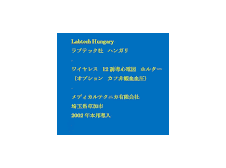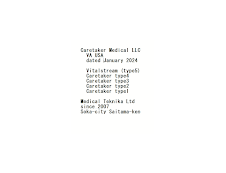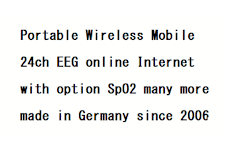2014年5月31日土曜日
あまり知られていないFFRの重要性
A type of pressure wire, used to measure
intracoronary pressures
-- photo courtesy
Volcano Corporation December 16, 2010 -- A report in this week's Circulation, the Journal of the American Heart Association, analyzes data from the highly-impactful FAME study and concludes:
"Economic evaluation of the FAME study reveals that FFR-guided percutaneous coronary intervention in patients with multivessel coronary disease is one of those rare situations in which a new technology not only improves outcomes but also saves resources."
Angioplasty.Org has reported on the FAME study since it was first presented two years ago, but this new analysis details how fractional flow reserve (FFR) is not only a better way to guide stent implantation, but a more cost-effective one, as well.
Titled, "Economic Evaluation of Fractional Flow Reserve-Guided Percutaneous Coronary Intervention in Patients With Multivessel Disease", the article uses data and one-year outcomes from the FAME study to show that the mean cost of a stent procedure (a.k.a. percutaneous coronary intervention or PCI) was reduced by almost $2,400 when decision-making was guided by FFR. The cost-savings come initially from the reduction in use of stents (1/3 less stents were used when FFR guided decision-making) but continued through the first year, due to less need for repeat procedures, re-hospitalization and adverse events. Two-year outcomes from FAME, although not included in this analysis, showed that the improved outcomes continued.
FAME: Fractional Flow Reserve Improves Outcomes
The original FAME study looked at a group of 1,005 patients with multivessel coronary artery disease who were going to undergo stenting. The patients were randomized to two methods for deciding which vessels and blockages needed treatment: (1) standard angiography; (2) standard angiography plus fractional flow reserve. Fractional flow reserve measures the actual blood flow through the artery and in FAME, if the blood flow was 80% of normal or less, the artery was stented, regardless of how it appeared visually on the angiogram. For example, some blockages looked worse on the angiogram than they measured with FFR, so for these lesions, PCI was deferred and no stent was used.
Not only did the FFR-guided cohort receive one-third less stents, but at one year the angiography-only cohort had experienced a 39% increase in death, heart attack or repeat procedures. The conclusion was not that stents were ineffective, but that stenting non-ischemic lesions offered no benefit. In these cases, the complications and events associated with stenting, even though small in percentage, were not offset by any benefit, and therefore resulted in worse outcomes overall. One conclusion that could be drawn from FAME was that the use of fractional flow reserve made stenting safer, as well as more effective. More about the original FAME study can be read in Angioplasty.Org's exclusive interview with Dr. Nico Pijls, the study's principal investigator.
Fractional Flow Reserve is Not Only Cost-Effective, But Cost-Saving
This week's study looked at all of the costs incurred by the FAME patients, from the initial treatment decision-making in the catheterization lab through the first year, including guiding catheters, regular wires, pressure wires, balloon dilatation catheters, stents, antiplatelet therapy, adenosine, contrast media, and hospital days used for each patient’s index procedure. Added to this were the costs associated with events that occurred during the first twelve months, such as re-hospitalization, repeat stenting with or without incidence of heart attack and subsequent coronary artery bypass grafting (CABG). The mean costs per patient looking at this one-year period were $14,315 for the FFR-guided arm versus $16,700 for the angiography-only arm: a cost-savings of $2,385 per patient. Additionally, although the initial procedure generated 90% of the total costs, the improvement in patient outcomes throughout the first year in the FFR-arm led to fewer re-hospitalizations and turned out to be a significant factor: 30% of the total cost-savings.
Commenting on this outcome, lead author, Dr. William Fearon wrote:
"It is unusual in modern medicine to find a new technology or treatment strategy that not only improves the intended health benefit and reduces risk and unintended effects but also saves costs.... A unique finding from the present analysis is the fact that an FFR-guided strategy to PCI in multivessel CAD not only was cost-saving but also achieved these results in just 1 year, a remarkably short period of time.
Read Angioplasty.Org's exclusive interview with Dr. Fearon for more information about how FFR is currently being used at Stanford and other centers.
William Fearon, MD
Stanford Medical Center
Two additional cost items were identified by Angioplasty.Org: one is the additional physician fee for placing the FFR wire, currently around $100. Dr. Fearon told Angioplasty.Org that neither this fee nor the physician fee for placing stents in an additional vessel were included in their totals, since they were small and did not become "significant" when the sensitivity analyses of varying the costs 20% in either direction were performed.
However, Dr. Fearon agreed that a second item could potentially yield an additional cost-savings for hospitals. Currently total reimbursement for stenting a single vessel is set by Medicare at one DRG (diagnosis related group) level. For multiple vessels, Medicare pays a higher DRG reimbursement. However, that reimbursement is fixed, whether 2, 3 or 4 vessels or stents are used. So any additional material or equipment costs must be absorbed by the hospital. Dr. Fearon commented to us, "You are correct that the hospital does lose money if say 4 stents are used instead of 2, for example. So in this respect FFR may be advantageous to the hospital as well."
Usage of Fractional Flow Reserve is Gaining
According to estimates, FFR currently is used in only 15% of PCIs in the U.S. But that number is growing as more data is published showing the clinical, and now the cost-savings advantages. Those interventional cardiologists who do not use FFR have previously pointed to the fact that it adds time to the procedure (3-5 minutes) and also costs more (the pressure wire plus the drug adenosine, which is used during FFR to maximize vasodilation, add about $1,000 in costs to the procedure). But, as Dr. Fearon points out in our interview, with practice the additional time becomes negligible. And this current study on cost-effectiveness shows that the extra cost of equipment and drugs is more than compensated for by the reduction in stenting and repeat procedures.
But more of a barrier to the adoption of FFR is the perception by many interventional cardiologists that a blockage they see with their own eyes on the angiogram must be causing a problem for the patient -- this is sometimes called the "oculo-stenotic reflex": if you see a blockage (a.k.a. stenosis), you must stent it! Yet FAME showed that angiography is not accurate for diagnosing whether or not a blockage is actually causing ischemia. In FAME two-thirds of the blockages that measured 50-70% on the angiogram were actually non-ischemic and did not need stenting. Even in the most severe stenoses of 71-90%, nearly one out of five were not causing a problem, according to FFR. As for the clinical evidence that supports deferring stenting on a lesion that is non-ischemic, after two years only one of the 513 deferred lesions led to a heart attack (0.2%) -- and the improved outcomes of the FFR-guided group remained intact.
About The Intravascular Imaging and Therapy Center on Angioplasty.Org
To assist in educating the professional and patient population about this new and evolving field, Angioplasty.Org created the "Intravascular Imaging and Therapy Center" in 2007: a special section devoted to information and news about intravascular ultrasound (IVUS), optical coherence tomography (OCT), functional measurement and fractional flow reserve (FFR) and future developments that can not only optimize interventional treatment, but incorporate imaging and treatment in a single device. The Intravascular Imaging and Therapy Center, supported by a grant from Volcano Corporation, features overview articles about these techniques and interviews with leading practitioners in the field, such as Drs. Antonio Colombo, Giulio Guagliumi, Augusto Pichard, William Fearon, Nico Pijls and Ron Waksman.
Reported by Burt Cohen, December 16, 2010
























